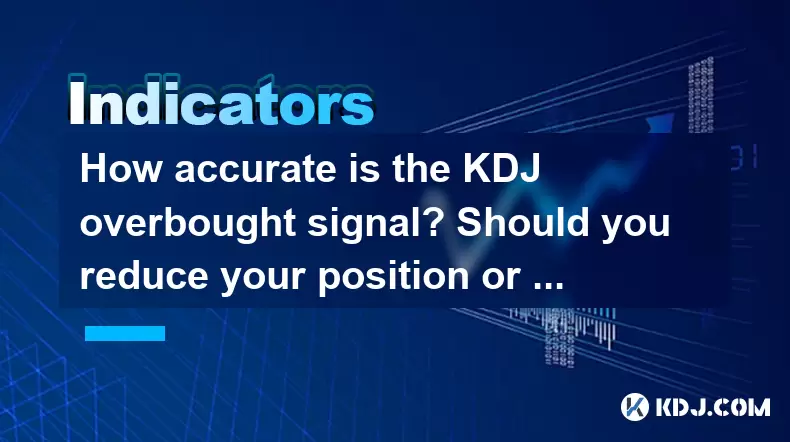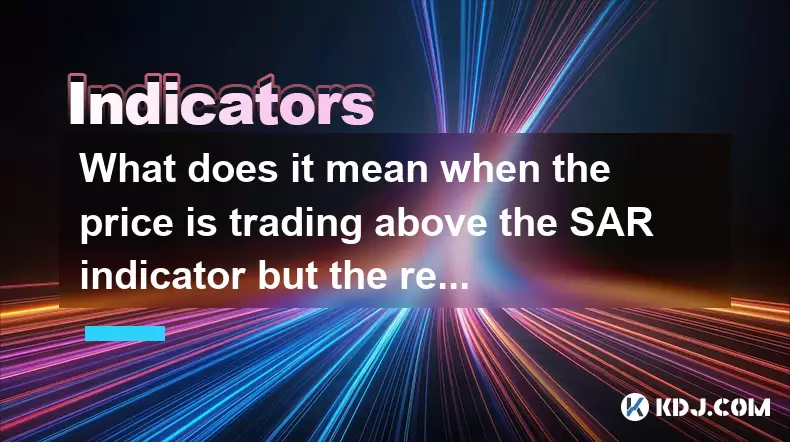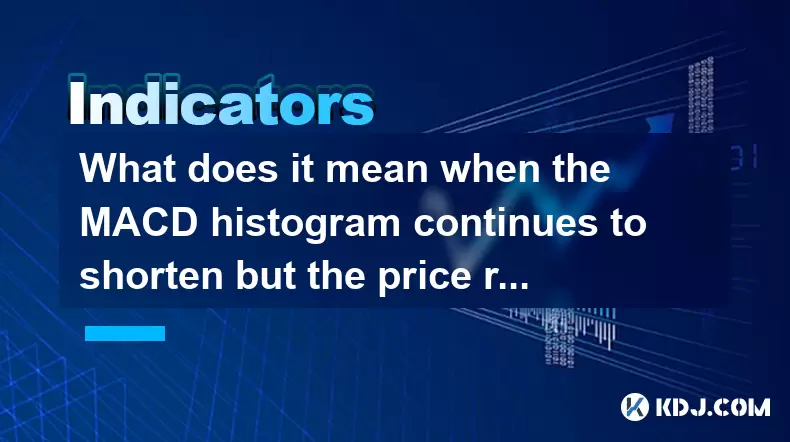-
 Bitcoin
Bitcoin $116600
0.11% -
 Ethereum
Ethereum $4235
4.72% -
 XRP
XRP $3.283
0.22% -
 Tether USDt
Tether USDt $1.000
0.00% -
 BNB
BNB $805.4
1.59% -
 Solana
Solana $181.8
2.27% -
 USDC
USDC $0.9998
-0.01% -
 Dogecoin
Dogecoin $0.2450
7.90% -
 TRON
TRON $0.3363
-0.80% -
 Cardano
Cardano $0.8161
2.85% -
 Hyperliquid
Hyperliquid $43.68
6.68% -
 Chainlink
Chainlink $21.20
8.50% -
 Stellar
Stellar $0.4526
0.64% -
 Sui
Sui $3.949
3.12% -
 Bitcoin Cash
Bitcoin Cash $571.3
-2.83% -
 Hedera
Hedera $0.2656
1.45% -
 Avalanche
Avalanche $24.41
3.14% -
 Ethena USDe
Ethena USDe $1.001
0.03% -
 Litecoin
Litecoin $122.0
-2.03% -
 Toncoin
Toncoin $3.425
1.51% -
 UNUS SED LEO
UNUS SED LEO $9.004
0.19% -
 Shiba Inu
Shiba Inu $0.00001381
4.36% -
 Uniswap
Uniswap $10.93
0.05% -
 Polkadot
Polkadot $4.117
3.93% -
 Dai
Dai $1.000
0.02% -
 Pepe
Pepe $0.00001235
3.53% -
 Bitget Token
Bitget Token $4.507
0.36% -
 Cronos
Cronos $0.1570
2.05% -
 Monero
Monero $274.9
0.14% -
 Ethena
Ethena $0.7511
15.68%
How accurate is the KDJ overbought signal? Should you reduce your position or hold when the indicator is blunt?
The KDJ indicator helps crypto traders spot overbought conditions, but its accuracy varies with market volatility, timeframes, and strategy.
May 28, 2025 at 05:14 pm

The KDJ indicator, also known as the Stochastic Oscillator, is a popular technical analysis tool used by traders in the cryptocurrency market to identify overbought and oversold conditions. The accuracy of the KDJ overbought signal is a topic of much debate and depends on various factors, including market conditions, timeframes, and the trader's strategy. This article will delve into the intricacies of the KDJ indicator, its overbought signals, and provide guidance on whether to reduce positions or hold when the indicator appears blunt.
Understanding the KDJ Indicator
The KDJ indicator is a momentum oscillator that measures the relative position of the closing price within the recent trading range. It consists of three lines: the K line, the D line, and the J line. The K and D lines are used to generate buy and sell signals, while the J line is an extension of the K line and is used to confirm the strength of the signals.
The KDJ indicator is calculated as follows:
- K = (Current Close - Lowest Low) / (Highest High - Lowest Low) 100*
- D = SMA(K, 3)
- J = 3K - 2D
Where SMA stands for Simple Moving Average, and the default period for calculating the highest high and lowest low is typically 14 periods.
Identifying Overbought Signals with KDJ
An asset is considered overbought when the KDJ indicator rises above a certain threshold, typically 80. This suggests that the asset may be due for a price correction or reversal. The overbought signal is generated when the K line crosses above the D line and both lines are above the 80 level.
However, the accuracy of the overbought signal can vary significantly:
- Market Volatility: In highly volatile markets, the KDJ indicator may generate false signals more frequently.
- Timeframe: The accuracy of the signal can differ based on the timeframe used. Shorter timeframes may produce more signals, but they can be less reliable.
- Confirmation: Using additional indicators or chart patterns to confirm the KDJ signal can improve its accuracy.
When to Reduce Your Position
When the KDJ indicator generates an overbought signal, it may be a good time to consider reducing your position. Here are some scenarios where reducing your position could be beneficial:
- Strong Overbought Signal: If the KDJ lines are significantly above the 80 level and the J line is also high, this could indicate a strong overbought condition.
- Divergence: If the price is making higher highs while the KDJ indicator is making lower highs, this divergence could signal a potential reversal.
- Other Indicators: If other technical indicators, such as the Relative Strength Index (RSI) or Moving Average Convergence Divergence (MACD), also show overbought conditions, it may reinforce the KDJ signal.
Steps to reduce your position:
- Assess the Signal: Confirm that the KDJ lines are above 80 and the K line has crossed above the D line.
- Check for Divergence: Look for any divergence between the price and the KDJ indicator.
- Review Other Indicators: Use other technical indicators to confirm the overbought condition.
- Execute the Trade: Reduce your position size by selling a portion of your holdings.
When to Hold Your Position
Sometimes, the KDJ indicator may appear blunt or generate a false signal, and holding your position could be the better strategy. Here are some scenarios where holding your position might be more appropriate:
- Weak Overbought Signal: If the KDJ lines are just above the 80 level and the J line is not significantly high, the overbought condition might be weak.
- Trend Strength: If the asset is in a strong uptrend, the overbought signal might be a temporary pullback rather than a reversal.
- Fundamental Analysis: If the fundamentals of the cryptocurrency remain strong, it might be better to hold your position despite the overbought signal.
Steps to hold your position:
- Assess the Signal: Determine if the KDJ lines are only slightly above 80 and the J line is not significantly high.
- Analyze the Trend: Use trend lines or moving averages to assess the strength of the current trend.
- Review Fundamentals: Consider the underlying fundamentals of the cryptocurrency to see if they support holding your position.
- Monitor the Market: Keep an eye on market conditions and be ready to adjust your strategy if necessary.
Dealing with Blunt KDJ Signals
A blunt KDJ signal occurs when the indicator does not provide clear or strong signals, making it difficult to make trading decisions. Here are some strategies to deal with blunt KDJ signals:
- Use Multiple Timeframes: Analyzing the KDJ indicator on different timeframes can help provide a more comprehensive view of the market.
- Combine with Other Indicators: Using other technical indicators, such as the RSI, MACD, or Bollinger Bands, can help confirm or refute the KDJ signals.
- Adjust the KDJ Parameters: Tweaking the parameters of the KDJ indicator, such as the period for calculating the highest high and lowest low, can help tailor it to your trading style and the specific cryptocurrency.
Steps to adjust the KDJ parameters:
- Open Your Trading Platform: Access the settings for the KDJ indicator.
- Change the Period: Adjust the period used to calculate the highest high and lowest low. Common alternatives include 9 or 21 periods.
- Monitor the Results: Observe how the adjusted KDJ indicator performs and whether it provides clearer signals.
- Fine-Tune: Continue to fine-tune the parameters based on your trading results and market conditions.
Practical Example of KDJ Overbought Signal
To illustrate the use of the KDJ indicator and its overbought signal, let's consider a practical example using Bitcoin (BTC).
Scenario:
- Price: Bitcoin is trading at $50,000.
- KDJ Indicator: The K line is at 85, the D line is at 83, and the J line is at 91.
- Other Indicators: The RSI is at 75, and the MACD shows a bearish divergence.
Analysis:
- Overbought Signal: The KDJ lines are above 80, and the K line has crossed above the D line, indicating an overbought condition.
- Confirmation: The high RSI and bearish MACD divergence support the overbought signal.
- Decision: Based on the strong overbought signal and confirmation from other indicators, it might be prudent to reduce your position in Bitcoin.
Steps to reduce the position:
- Assess the Signal: Confirm the KDJ lines are above 80 and the K line has crossed above the D line.
- Check for Divergence: Verify the bearish MACD divergence.
- Review Other Indicators: Note the high RSI value.
- Execute the Trade: Sell a portion of your Bitcoin holdings to reduce your position.
Frequently Asked Questions
Q: Can the KDJ indicator be used for all cryptocurrencies?
A: Yes, the KDJ indicator can be used for all cryptocurrencies. However, its effectiveness may vary depending on the specific market conditions and volatility of each cryptocurrency. It's important to backtest the indicator on historical data for the particular cryptocurrency you are trading to gauge its reliability.
Q: How often should I check the KDJ indicator?
A: The frequency of checking the KDJ indicator depends on your trading strategy and timeframe. For day traders, checking the indicator every few hours or even more frequently may be necessary. For swing traders, checking it daily or even weekly might be sufficient. Always ensure that you are monitoring the indicator according to your trading plan.
Q: Is it possible to use the KDJ indicator in combination with other technical analysis tools?
A: Absolutely, combining the KDJ indicator with other technical analysis tools can enhance its effectiveness. Common combinations include using the KDJ with the RSI, MACD, and trend lines. These additional tools can help confirm the signals generated by the KDJ and provide a more robust trading strategy.
Q: Can the KDJ indicator be used on different timeframes?
A: Yes, the KDJ indicator can be used on various timeframes, from short-term charts like 1-minute or 5-minute charts to longer-term charts like daily or weekly charts. The choice of timeframe should align with your trading strategy and goals. Shorter timeframes may provide more signals but can be less reliable, while longer timeframes may offer more reliable signals but fewer trading opportunities.
Disclaimer:info@kdj.com
The information provided is not trading advice. kdj.com does not assume any responsibility for any investments made based on the information provided in this article. Cryptocurrencies are highly volatile and it is highly recommended that you invest with caution after thorough research!
If you believe that the content used on this website infringes your copyright, please contact us immediately (info@kdj.com) and we will delete it promptly.
- Solana Meme Coin Presales: Hype or the Next Big Thing?
- 2025-08-10 02:50:12
- Pi Network, Altcoin Season, and Breakout Tokens: What's Hot in 2025?
- 2025-08-10 02:50:12
- Decoding Crypto Presales: Is Cold Wallet the New Neo Pepe?
- 2025-08-10 02:30:12
- Cryptos, 2025, Market Caps: Riding the Next Wave
- 2025-08-10 02:30:12
- Trump, Crypto Vehicle, and WLFI Tokens: A New York Minute on the Latest Buzz
- 2025-08-10 00:30:12
- Wheat Penny Fortune: Unearthing Valuable Coins in Your Pocket Change
- 2025-08-10 00:35:19
Related knowledge

What does it mean when the price is trading above the SAR indicator but the red dots are densely packed?
Aug 09,2025 at 11:49pm
Understanding the SAR Indicator and Its Visual SignalsThe SAR (Parabolic Stop and Reverse) indicator is a technical analysis tool used primarily to de...

What does it mean when the MACD histogram continues to shorten but the price reaches a new high?
Aug 09,2025 at 09:29pm
Understanding the MACD Histogram and Its ComponentsThe MACD (Moving Average Convergence Divergence) indicator is a widely used technical analysis tool...

What does it mean when the Triple Moving Average (TRIX) turns downward but the price doesn't fall?
Aug 09,2025 at 12:42pm
Understanding the Triple Moving Average (TRIX) IndicatorThe Triple Moving Average, commonly known as TRIX, is a momentum oscillator designed to filter...

What does it mean when the 10-day and 30-day moving averages repeatedly intertwine?
Aug 10,2025 at 02:42am
Understanding Moving Averages in Cryptocurrency TradingMoving averages are among the most widely used technical indicators in the cryptocurrency tradi...

What does it mean when the ZIGZAG indicator's highs and lows gradually move downwards?
Aug 10,2025 at 02:14am
Understanding the ZIGZAG Indicator in Cryptocurrency TradingThe ZIGZAG indicator is a popular technical analysis tool used by cryptocurrency traders t...

What does it mean when the price touches the upper band of the ENE system and then falls back?
Aug 10,2025 at 12:42am
Understanding the ENE Indicator StructureThe ENE (Envelope) indicator is a technical analysis tool used in cryptocurrency trading to identify potentia...

What does it mean when the price is trading above the SAR indicator but the red dots are densely packed?
Aug 09,2025 at 11:49pm
Understanding the SAR Indicator and Its Visual SignalsThe SAR (Parabolic Stop and Reverse) indicator is a technical analysis tool used primarily to de...

What does it mean when the MACD histogram continues to shorten but the price reaches a new high?
Aug 09,2025 at 09:29pm
Understanding the MACD Histogram and Its ComponentsThe MACD (Moving Average Convergence Divergence) indicator is a widely used technical analysis tool...

What does it mean when the Triple Moving Average (TRIX) turns downward but the price doesn't fall?
Aug 09,2025 at 12:42pm
Understanding the Triple Moving Average (TRIX) IndicatorThe Triple Moving Average, commonly known as TRIX, is a momentum oscillator designed to filter...

What does it mean when the 10-day and 30-day moving averages repeatedly intertwine?
Aug 10,2025 at 02:42am
Understanding Moving Averages in Cryptocurrency TradingMoving averages are among the most widely used technical indicators in the cryptocurrency tradi...

What does it mean when the ZIGZAG indicator's highs and lows gradually move downwards?
Aug 10,2025 at 02:14am
Understanding the ZIGZAG Indicator in Cryptocurrency TradingThe ZIGZAG indicator is a popular technical analysis tool used by cryptocurrency traders t...

What does it mean when the price touches the upper band of the ENE system and then falls back?
Aug 10,2025 at 12:42am
Understanding the ENE Indicator StructureThe ENE (Envelope) indicator is a technical analysis tool used in cryptocurrency trading to identify potentia...
See all articles

























































































